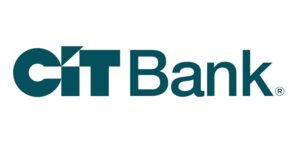 Check clearing is the process of moving money to complete a payment made by checks. To say the very least, the recipient submits the check to their bank, and the bank collects funds from the check writer’s bank.
Check clearing is the process of moving money to complete a payment made by checks. To say the very least, the recipient submits the check to their bank, and the bank collects funds from the check writer’s bank.
Assuming that the funds are available and there is no apparent issue with the check, the money will be transferred. Take a few minutes out of your day to learn how checks clear! Check out our Bank Bonuses, Saving Rates and Credit Card Bonuses!
Check Processing Basics
Today, checks that you write or receive are processed in three different ways:
Traditional Method. Although rare, this manual process still exists in banking systems now. This process is performed entirely through postal mail, which is why it can take several days.
Whenever you write a check, the payee deposits the check to his or her bank, that sends the check to a clearing unit such as a Federal Reserve Bank. The clearing unit will then debit your bank’s account and credit the payee. Finally, the check returns to your bank and is stored until it is destroyed.
Electronic/Check 21 Method. Nowadays, most checks that are processed today are received as e-checks, or electronic checks, and are cleared within a business day. Check 21 set universal rules for all banks. Some banks still insist on taking paper checks, this makes other banks to send a substitute check instead of the original.
Under Check 21 substitute-check images are transmitted for clearing to one of the following channels:
- Directly to the check-writer’s bank
- To a local clearinghouse exchange
- To a correspondent institution (usually a very large bank or credit union)
- To a Federal Reserve Bank (there are 12 throughout the U.S.)
Check 21 also allows account holders to transmit check data directly to ther banks so they don’t have to do it physically. This includes deposits made through mobile phone apps.
Electronic Funds Transfer (EFT) Method. To make things easier, many billers will convert your paper checks into electronic withdrawals from your checking account. The most common type is called the ACH (Automated Clearing House) transfer. For example, if you mail a check to your utility company, they will take the routing and account number associated with that check to request an ACH payment.
Clearing Checks You Write
Some of you might be asking yourselves, “How long does it take a check to clear after you write it?” When you write a check, you should assume that the amount of money is no longer in your account. It might take several days to see money to actually leave your account.
During that time, the check is called “outstanding,” and you could potentially spend the money. The basic rule of thumb is to assume that funds will leave your account sooner or later. If you’ve been payed with a check, it’s probably best to wait until the payment has gone through the bank but how long do you have to wait exactly?
When somebody writes you a check, it has cleared when the money has transferred from the check writer’s account and you can spend it. It’s safe to assume that the check is not always clear when the money has arrived
Using Checks You Receive
When you receive a payment by check, you’re probably excited to use your money. It could be for expenses, or you might have doubts about whether the check will bounce. The anticipation can build up, so how long do will it take for the check to clear?
“Available” does not mean cleared. Whenever somebody writes you a check, it only clears when the check writer’s money is transferred from their bank account into yours and you can spend that money. However, it’s not always clear when or if the money even arrives. Some banks will allow you to spend a small portion of the check even before a check clears.
If you decide to use the funds from a check that bounces, you are responsible for paying it back. Federal law requires that banks make part of your deposit available to you within a few days, usually the first $200 available. Banks will allow for larger amounts to be available if they are specific items, such as government-issued checks, cashier’s checks, and USPS money orders.
At the end of the day, it’s not worth the risk using a check that hasn’t fully cleared. Checks that are written from major banks, you will be able to find out, within a few days, whether or not there are any issues. Your safest bet is to contact your bank directly and get the status of the check. Additionally, you can even ask if there are any risks to spending the money.
Dangers of Cleared Checks
If you have any doubt about a cleared check, don’t spend the money until you know that your bank has collected the money it needs. Waiting can be inconvenient, but dealing with any issues is even worse.
Sometimes scammers or con artists take advantage of misunderstandings about how checks clear. Unfortunately, banks don’t protect consumers in this situation and the victim will be responsible for any losses by repaying the bank.
 |
 |
Bottom Line
Cashing in a check? First you must understand what it means to clear a check. In simple terms, this means moving money to complete a payment made.
We hope after reading this, you have gained a good insight as to how a check is cleared and what to do in the time period. Check out our Bank Bonuses, Saving Rates and Credit Card Bonuses!




Leave a Reply